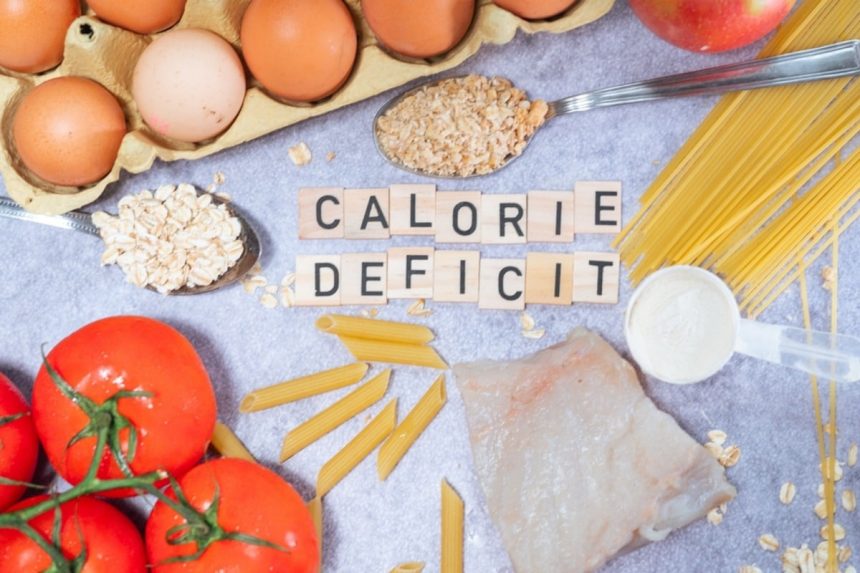Losing weight is a journey many navigate at some point in their lives. Amid countless diet trends, from keto to intermittent fasting, one fundamental principle consistently emerges: the concept of calories in versus calories out. At its core, this method revolves around creating a calorie deficit, specifically a 500-calorie deficit. Yet, despite its simplicity, there is widespread confusion about how exactly this works and why it sometimes doesn’t.
Interestingly, the 500 calorie deficit approach is based on the idea that reducing 500 calories each day should lead to a safe weight loss of roughly one pound per week. However, recent research shows this is not always straightforward. That is because metabolism, hormones, genetics, and lifestyle all play crucial roles. For instance, did you know that when you start cutting calories, your body can subconsciously slow down your movements to conserve energy? Yes, even simple fidgeting decreases, which makes weight loss trickier than it seems.
This article clarifies these complexities, offering detailed explanations, science-backed facts, and practical advice. By understanding exactly what calories are, how they function, and how to implement a sustainable 500-calorie deficit successfully, you can take control of your weight loss journey. Let’s dive into the reality behind calories and how to make them work effectively for your health goals.
What are Calories?
Calories are simply units of energy that your body extracts from the foods and beverages you consume. Everything you eat (carbohydrates, fats, and proteins) provides calories. Your body uses this energy to power everything from basic bodily functions, like breathing and pumping blood, to vigorous activities, like running and weightlifting.
Specifically, the calories discussed in nutrition and weight loss are technically called kilocalories. One food calorie (kcal) represents the energy required to heat one kilogram of water by one degree Celsius. Whether you are active or at rest, your body constantly needs energy. If it doesn’t use all the energy you consume, it stores the excess primarily as body fat, contributing to weight gain.
Connection Between Calories and Body Weight
Understanding calories is crucial because they directly affect your body weight. The balance between how many calories you consume (energy intake) and how many calories you expend (energy output) determines whether you gain, lose, or maintain weight.
Your body uses calories in three main ways:
- Resting energy expenditure (REE): The calories your body needs at rest to perform essential functions like breathing, heartbeat, and digestion.
- Thermic effect of food (TEF): The calories expended in digesting, absorbing, and processing the nutrients from your meals.
- Activity energy expenditure (AEE): Calories burned through physical activities like exercising, walking, or performing daily chores.
When the calories you eat are less than the calories your body uses, you enter a calorie deficit, which leads to weight loss. Conversely, consuming more calories than you burn creates a surplus, which causes weight gain.
Several other factors also influence how your body manages calories and your weight, including:
- Genetics and family history
- Hormonal fluctuations
- Physical activity level
- Stress and emotional health
- Underlying medical conditions
- Sleep quality and duration
Knowing these factors can help you better understand the intricacies of calorie management and set realistic weight loss expectations.
What is a Calorie Deficit?
Simply put, a calorie deficit occurs when you consume fewer calories each day than your body needs to maintain your current weight. When you are consistently in a deficit, your body must tap into stored energy (primarily fat reserves) to make up for the missing calories. This leads directly to weight loss, especially when sustained over time.
A moderate and safe calorie deficit is often around 500 calories a day. This level is widely recommended because it generally translates to about one pound of fat loss per week. This is considering that roughly 3,500 calories equals one pound of body fat. Maintaining this deficit consistently allows for steady, healthy weight loss without causing extreme hunger or fatigue.
However, while a 500-calorie deficit is safe for most people, exceeding this deficit (like drastically following a 500-calorie diet) can cause significant problems. Severe calorie restriction can trigger muscle loss, nutrient deficiencies, hormonal imbalances, and reduced metabolism. Thus, a balanced approach (such as the popular 500 calorie deficit) is ideal for sustainable long-term weight management.
What is Your Basal Metabolic Rate (BMR)?
Your Basal Metabolic Rate (BMR) is the number of calories your body burns each day at complete rest. Even when you are lying still, your body is constantly active. It circulates blood, repairs tissues, breathes, and maintains body temperature, all of which require energy.
Your BMR accounts for about 60-75% of your total daily calorie expenditure. Factors like age, sex, height, weight, and muscle mass influence your BMR. Generally, the more muscle mass you have, the higher your BMR, because muscles consume more calories even at rest.
While several online calculators provide estimates of your BMR based on these factors, the most accurate method involves a process called indirect calorimetry. Yet, due to its complexity, indirect calorimetry is typically reserved for clinical or research settings.
What are Maintenance Calories?
Maintenance calories are the exact number of calories you need each day to maintain your current body weight. This figure combines your basal metabolic rate, daily activities, and exercise. Eating at your maintenance level means you won’t lose or gain weight; you are essentially balancing your energy intake and output.
To initiate a calorie deficit (specifically a 500-calorie deficit), you first determine your maintenance calories and then subtract 500. For instance, if your maintenance is approximately 2,200 calories daily, consuming around 1,700 calories daily will create the necessary deficit to facilitate weight loss.
It is essential to recalculate your maintenance calories periodically. As you lose weight, your body’s energy requirements decrease, and your initial maintenance number will no longer be accurate. Regular adjustments ensure continuous progress toward your weight goals.
The Idea of “Calories In, Calories Out” (CICO)
The concept of “Calories In, Calories Out” (CICO) simplifies weight management down to energy balance. According to this theory, if you consume fewer calories than your body expends, you will lose weight, and vice versa. Fundamentally, this is accurate, and every successful weight loss plan must involve some form of calorie deficit.
However, the CICO concept can sometimes oversimplify how complex the human body is. Your body dynamically adjusts both sides of the energy equation. For example, when you reduce calorie intake, your body may slow your metabolism or make you feel hungrier to counteract the deficit. Factors like hormones (especially insulin, cortisol, and leptin), genetics, gut health, and even stress can influence calorie absorption and energy expenditure.
Additionally, not all calories affect your body equally. Calories from nutrient-dense foods like lean proteins, vegetables, and whole grains impact your body differently than calories from processed foods or sugars. They affect satiety, metabolism, and even hormone regulation in distinct ways.
Thus, while “calories in, calories out” is fundamentally correct, successful long-term weight management requires understanding and managing these nuanced details. Awareness of these complexities prepares you to navigate weight loss realistically and sustainably.
What Calorie Deficit is Recommended for Weight Loss? How to Identify the Best for You
Understanding the correct calorie deficit is essential for healthy and sustainable weight loss. While the widely accepted standard is a 500-calorie deficit, the optimal number varies based on your individual needs, physical characteristics, and lifestyle. A calorie deficit that is too small might slow your progress, while a deficit that is too large can lead to adverse health effects. So, how exactly do you identify your ideal calorie deficit? Let’s break it down logically.
Calculating Your Maintenance Calories
Before creating a calorie deficit, you first need to know how many calories your body requires daily to maintain its current weight. This number is known as your maintenance calories. Here is how you can calculate them accurately:
Method 1: Online Calorie Calculators
A quick and effective method is to use an online calculator, such as the National Institutes of Health (NIH) Body Weight Planner. These calculators factor in your age, height, weight, gender, and activity level to estimate your maintenance calories. Although quick and convenient, these calculators give an approximation, not a precise figure.
Another innovative approach is to use the HealthifyMe Snap feature, where you can simply put a picture of your food, and the app will calculate the calories for you.
Method 2: Basal Metabolic Rate (BMR) Calculation
Your BMR is the energy your body uses for vital functions like breathing and circulation when completely at rest. You can estimate your BMR using these widely recognized formulas:
For males:
BMR = 66 + (13.75 × weight in kg) + (5 × height in cm) – (6.8 × age in years)
For females:
BMR = 655 + (9.6 × weight in kg) + (1.85 × height in cm) – (4.7 × age in years)
After determining your BMR, factor in your physical activity using the Harris-Benedict formula to find your maintenance calories:
| Activity Level | Multiplier |
| Sedentary (little/no exercise) | BMR × 1.2 |
| Lightly active (1–3 days/week) | BMR × 1.375 |
| Moderately active (3–5 days/week) | BMR × 1.55 |
| Very active (6–7 days/week) | BMR × 1.725 |
| Extra active (high-intensity daily) | BMR × 1.9 |
Method 3: 10-Day Calorie Tracking
For maximum accuracy, track your food intake and body weight for 10 days. Keep your daily habits and activities consistent. After 10 days:
- Calculate your average daily calorie intake by dividing the total calories consumed by 10.
- If your weight stays steady, you have identified your precise maintenance calories.
To begin losing weight at a healthy pace, subtract 500 calories from your calculated maintenance calories. Regularly adjust this number as your body weight changes.
Best Ways to Reach a Calorie Deficit Safely
Achieving a calorie deficit safely involves a balanced approach to diet and exercise. It is more beneficial to make gradual and sustainable lifestyle adjustments instead of relying on extreme measures.
Through Diet
Your diet significantly impacts your ability to sustain a calorie deficit. Here is how to manage your calories safely and efficiently:
- Prioritize nutrient-dense foods: Incorporate fruits, vegetables, lean proteins (like chicken, fish, or tofu), whole grains (like oats or quinoa), nuts, legumes, and low-fat dairy into your daily meals. Nutrient-dense foods keep you full longer and support your overall health.
- Avoid liquid calories: Beverages such as soda, alcohol, sweetened coffee drinks, and juices can quickly add empty calories. Opt for water, unsweetened tea, or flavored seltzer instead.
- Limit highly processed foods: Highly processed snacks are calorie-rich yet low in essential nutrients. A 2019 study revealed that consuming highly processed foods led people to consume about 500 extra calories daily compared to whole-food meals.
- Cook at home more often: Home-cooked meals allow better control over ingredients and portion sizes. It will help maintain a calorie deficit without meticulous counting.
Through Exercise
Physical activity amplifies your calorie deficit by burning calories and building muscle, which in turn boosts your metabolism. Here is what you need to know:
- Aim for regular moderate to vigorous activity: The Physical Activity Guidelines for Americans suggest 150–300 minutes of moderate-intensity or 75–150 minutes of vigorous-intensity aerobic exercise weekly.
- Combine aerobic and strength training: Activities like running, cycling, or swimming improve cardiovascular health, while strength training helps preserve muscle mass during weight loss. Aim for strength exercises targeting major muscle groups twice weekly.
- Incorporate daily movement: Simple actions like taking the stairs, standing periodically while working, or going for short walks help burn additional calories throughout your day.
Other Ways to Reach a Calorie Deficit
Beyond diet and exercise, addressing psychological or behavioral barriers can also help maintain a calorie deficit:
- Cognitive Behavioral Therapy (CBT): CBT can change negative thought patterns surrounding food, which can help you stick to dietary goals effectively.
- Motivational Interviewing (MI): MI techniques create motivation and help establish lasting, healthier eating habits.
- Mobile Apps: Apps can assist with food tracking, workout plans, and reminders. It can help create accountability and support.
Potential Risks of a Calorie Deficit
While calorie deficits are essential for weight loss, improper implementation poses risks. Here is what you need to watch for:
- Nutrient Deficiencies: Severely limiting calories can deprive your body of essential vitamins and minerals. It can lead to weakened bones, hair loss, and compromised immunity.
- Low Energy Levels: Drastic calorie restriction can significantly slow metabolism, making you feel tired and lethargic throughout the day.
- Reduced Cognitive Function: Insufficient calorie intake can negatively impact your concentration, memory, and overall brain function.
- Gallstones: Rapid weight loss through extreme calorie deficits raises the risk of developing painful gallstones.
- Disordered Eating: A restrictive approach can trigger unhealthy attitudes toward food. That can lead to potential eating disorders or binge-eating behaviors.
HealthifyMe Note
Weight loss is not just a numbers game; it is a journey toward understanding and nurturing your body. Rather than obsessively tracking calories or jumping between fad diets, try cultivating a mindful, intuitive relationship with food and exercise. Remember, achieving sustainable results is about making consistent, small adjustments to your lifestyle. Be sure to follow routines that you enjoy and can maintain. Listen to your body, embrace flexibility in your approach, and prioritize balance over restriction. With patience, compassion, and self-awareness, you can achieve your health goals safely and joyfully.
The Final Word
A calorie deficit is a proven and powerful method for losing weight. However, it is essential to approach it thoughtfully and realistically. Rather than drastic calorie cuts, a moderate deficit combined with balanced nutrition and regular physical activity provides sustainable and healthy weight management.
Moreover, using modern tools, such as HealthifyMe, can simplify your weight-loss journey. HealthifyMe offers personalized nutrition guidance, tracks your progress effortlessly, and supports you every step of the way. Ultimately, lasting results happen when you integrate mindful eating, consistent exercise, and expert support into your daily life.
Frequently Asked Questions (FAQs)
Q: Is a 500-calorie deficit safe for everyone?
A: Generally, a 500-calorie deficit is safe and effective for most healthy adults. However, it is best to consult your healthcare provider if you have underlying medical conditions, are pregnant or breastfeeding, or have dietary restrictions. They will help determine the most appropriate calorie deficit for your specific needs.
Q: How much weight can I expect to lose with a 500-calorie deficit per week?
A: Typically, a consistent 500-calorie deficit can result in losing about one pound per week. Weight loss can vary based on your metabolism, activity level, initial weight, and dietary adherence.
Q: Can I maintain a calorie deficit without counting calories?
A: Yes, mindful eating approaches like focusing on portion control, prioritizing nutrient-rich foods, reducing processed food intake, and cooking at home more often can naturally help create a calorie deficit without meticulous counting. However, with easy calorie calculators like HealthifyMe Snap, counting calories is easy and fun.
Q: Can exercise alone create a calorie deficit?
A: Exercise contributes significantly to creating a calorie deficit. However, combining physical activity with dietary changes is typically more sustainable and effective for long-term weight management than relying solely on exercise.
Q: Why does weight loss slow down after initial progress?
A: Your body adapts to weight loss by slowing metabolism slightly and reducing overall calorie expenditure. Also, as you lose weight, you require fewer calories to maintain your new weight. It means that you must further adjust your calorie deficit to continue to progress.
Q: How can I prevent feeling hungry on a calorie deficit?
A: Consuming foods high in fiber and protein, drinking plenty of water, eating smaller meals more frequently, and incorporating healthy fats into your diet help you feel full and satisfied even when you are consuming fewer calories.
Q: Should I adjust my calorie deficit if my weight loss stalls?
A: Yes, you may need to recalculate your calorie requirements periodically as your body adjusts. If your progress plateaus, consider slightly increasing your physical activity or further evaluating your diet to ensure accuracy and consistency.
Research Sources
3. Control of Energy Expenditure in Humans
4. Factors affecting weight and health
5. Daily energy expenditure through the human life course
7. Physiological adaptations to weight loss and factors favouring weight regain
8. The Fidget Factor and the obesity paradox. How small movements have a big impact
9. The genetics of obesity: from discovery to biology
11. BMR Calculator
12. Establishing energy requirements for body weight maintenance: validation of an intake-balance method
13. Did the food environment cause the obesity epidemic?
16. Physical Activity Guidelines for Americans
17. Resistance Training Combined With Diet Decreases Body Fat While Preserving Lean Mass Independent of Resting Metabolic Rate: A Randomized Trial







